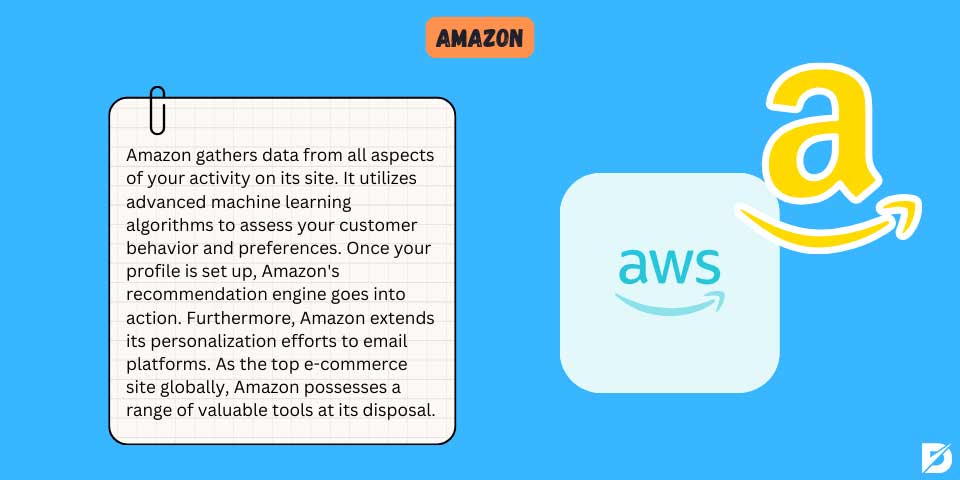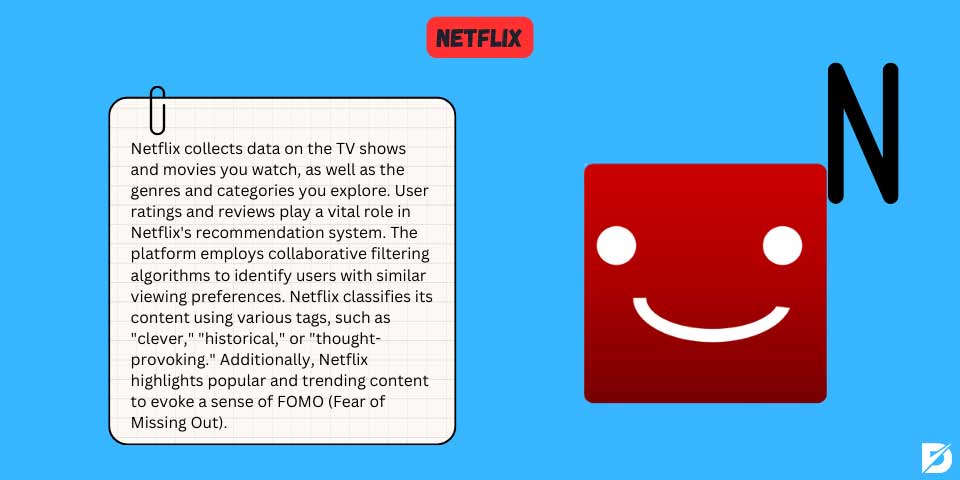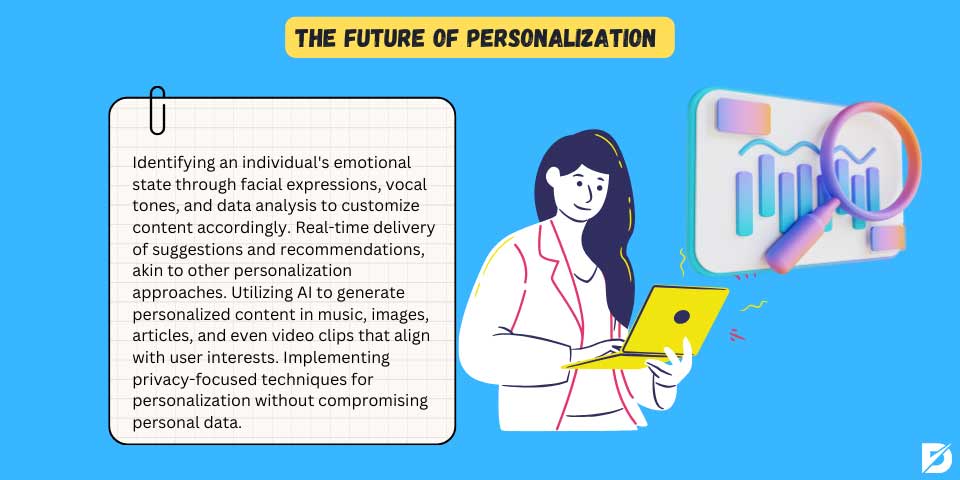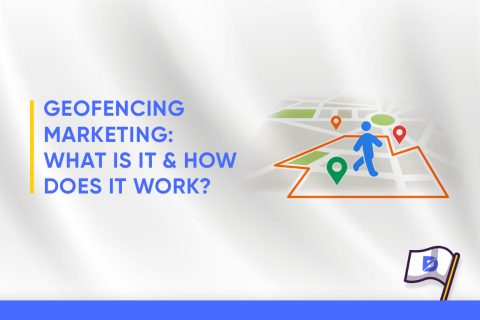In today’s digital world, where everything is fast-paced and technology-driven, it is not so hard to understand that in order to create a difference, businesses should provide their customers with personalized content. Customizing the content not only keeps the existing customers happy but also draws more customers in. Because in a world with too much to choose from, people prefer to choose the things they are actually interested in. Two companies have excelled in this area: Amazon and Netflix. Both of these giants have gained widespread recognition for their ability to offer tailored content to their users, keeping them engaged and committed. The key to their success lies in their expertise in using personalized data to provide suggestions and recommendations relevant to the user’s interests and preferences. In this post, we will explore personalized content and how Amazon and Netflix use personalized data to enhance the user experience.
Personalized Content: The Key to Customer Engagement
The key to the success of Amazon and Netflix is their ability to offer personalized content that is designed to individual preferences. By understanding what each user likes and providing relevant recommendations, these tech companies are able to retain their users and keep them engaged. This concept may seem simple. However, its impact is significant as users are more likely to spend time and money on a platform that meets their interests. Therefore, companies must prioritize personalization to create a positive user experience and, consequently, generate more money.
The E-Commerce Giants’ Personalization Strategy
In this section, we will examine Amazon and Netflix’s personalization strategies to gain more knowledge about their works.

Amazon
Amazon, which started out as an online bookstore, has now become the largest e-commerce platform in the world. One of its main reasons for success is its personalized recommendation engine. When you visit Amazon‘s website, you’ll come across a homepage that’s customized just for you, but how does Amazon manage to achieve this level of personalization? Also, learn how Amazon started. Here are some of its main approaches.
- User Profiling: Amazon collects data from every aspect of your activity on the site. It collects the data of your past purchases, the products you have searched for, and your item reviews. They also factor in your demographic information, such as age, location, and gender, to create a detailed user profile.
- Machine Learning Algorithms: Amazon is equipped with sophisticated machine learning algorithms that analyze your customer behavior and preferences. These algorithms compare your profile to millions of other users to find patterns and similarities, which will eventually be served to you in the form of personalized content.
- Recommendation Engine: Once you complete the formation of your profile, Amazon’s recommendation engine begins to work. Based on your historical data and the preferences of other users who have similar patterns to your profile, it suggests items that will most likely appeal to you.
- Personalized Emails: Amazon not only acts within the boundaries of its website. It takes personalization to e-mail platforms. They send personalized email recommendations, informing you about various deals and products that might interest you. This paves the way for repeat visits and purchases.
- Echo Devices and Alexa: As the world’s leading e-commerce site, Amazon has many valuable tools in its possession. Echo devices and Alexa voice assistants help Amazon to further enhance personalization. They gather data on your voice commands, music preferences, and smart home interactions to generate responses and recommendations.
Amazon‘s focus on customer satisfaction is evident in its numerous strategies to enhance the user experience, build customer loyalty, and drive sales. Today, Amazon has become among the e-commerce companies and one of the world’s most successful companies by consistently prioritizing the needs and preferences of its customers.

Netflix
Netflix is famous for its wide range of TV shows and movies. As a leader in its industry, it continues to serve its customers to the best of its ability. However, it cannot be denied that its success largely depends on its personalized content recommendations. Here’s how Netflix sets itself apart from its competitors in the use of personalized data:
- Viewing History: Netflix takes notes on every show and movie you watch. They know how long you watch them and whether you finish a series or not. This provides Netflix with crucial data that helps it better understand your entertainment preferences.
- Genre and Category Preferences: Netflix also takes the genres and categories you explore into account. This helps it to identify your interests beyond specific titles and provides you with more options.
- Ratings and Reviews: Similar to other streaming platforms, the user’s ratings and reviews of Netflix content prove crucial for its recommendation system. It uses the feedback of its customers to give even more sophisticated personalized suggestions.
- Collaborative Filtering: Like its competitor Amazon, Netflix is equipped with collaborative filtering algorithms that are designed to find users with similar viewing habits. This means that if someone with a similar taste in movies and shows enjoys something you haven’t seen, whatever they are watching is likely to be recommended to you.
- Content Tags: Netflix names its content with a large range of tags, such as “witty,” “period piece,” or “mind-bending.” Based on your earlier preferences, they analyze which tags resonate with you and suggest other content with matching tags.
- Trending and Popular: Netflix also plays on your sense of FOMO (Fear of Missing Out) by displaying trending and popular content. This heightens your fear of missing out and encourages you to explore what everybody else is watching.
This is how Netflix makes you feel like it knows what you want to watch before you even know it. Creating a homepage filled with movie and TV show suggestions that feel custom-made for you creates a sense of comfort and loyalty amongst their customers. You can also learn how does the YouTube algorithm work.
Challenges and Concerns
While the use of personalized data certainly contributed to Amazon and Netflix’s success, it also raised concerns about privacy and data security. Users provide these companies with vast amounts of personal information. There have been unfortunate cases of data breaches and misuse by major technology firms in the past. Both Amazon and Netflix have put strict security measures in place to protect user data. However, the controversy over the right balance between personalization and privacy ensues. Also, learn what is data-driven marketing.
There’s also the issue of filter bubbles and echo chambers. When platforms personalize content recommendations too heavily to a user’s existing preferences, exposure to diverse perspectives and content gets limited. Keeping the user in their own bubble and echoing what they already know is likely to be a problem in the near future. Because it has the potential to narrow perspectives on an already polarized society and reinforce existing beliefs.

The Future of Personalization
Amazon and Netflix’s success in providing personalized content has influenced numerous industries to adopt similar tactics. Personalization is becoming a common practice in various sectors. Including music streaming services like Spotify and news websites like The New York Times or The Guardian. In the fast-paced world we live in, where the ongoing development of technology is a constant element, we can expect the emergence of even more advanced personalization methods.These could entail:
- Emotion Recognition: Recognizing the specific traits of a person’s emotions based on facial expressions, voice tones, and other data to understand a user’s emotional state and customize content accordingly.
- Real-time Personalization: Providing recommendations and suggestions in a similar fashion to other personalization methods but in real-time. The recommendations will be based on the customer’s current context and behavior.
- AI-Generated Content: Using AI to come up with personalized content in various areas, such as music, pictures, articles, or even video clips that align with the users’ interests.
- Privacy-First Personalization: Creating techniques that are especially strict on user privacy and provide personalization without compromising any tangible personal information.
- Virtual Reality (VR) and Augmented Reality (AR): Personalizing experiences in VR and AR environments to a degree that captivate the users, creating totally different ways to encourage loyalty.
Conclusion
Tech giants such as Amazon and Netflix have revolutionized the use of personalized data to improve user experiences. Their carefully crafted personalized content recommendations and suggestions keep users engaged and loyal, contributing significantly to their success. Although issues with user privacy and filter bubbles remain, the future holds even more advanced personalization techniques that will answer to individual preferences while still respecting user privacy. As technology advances, the debate between personalization and breach of private information will continue. However, one thing will remain certain. Personalization has become a permanent component that will shape how we interact with content and the services that provide them.
Frequently Asked Questions About
Amazon’s recommendation system uses advanced algorithms to improve the shopping experience with personalized suggestions based on past interactions.
Absolutely! On your home screen, Netflix uses your viewing history to suggest personalized shows and movies.
Yes. Amazon and Netflix give personalized recommendations you can customize by rating and deleting items from your history. You can adjust settings to personalize your shopping or viewing experience.
They use your preferences and feedback to personalize your online experience. And also improve their recommendations, leading to more relevant products and suggestions.
Of course. Both Amazon and Netflix take data security seriously. Their advanced security measures ensure the confidentiality of your information.





No comments to show.